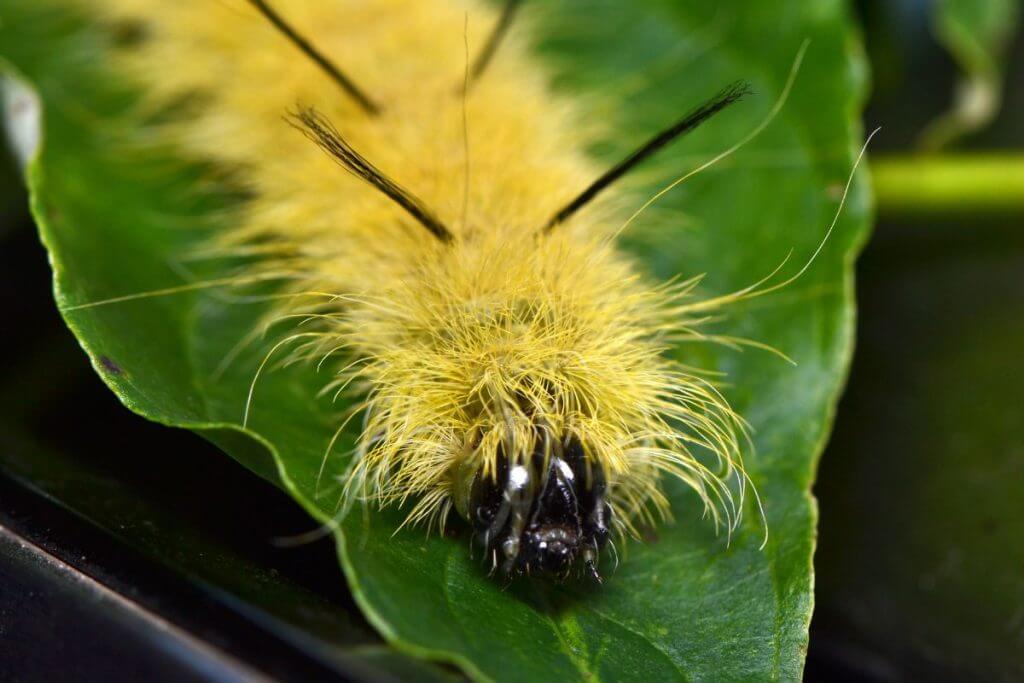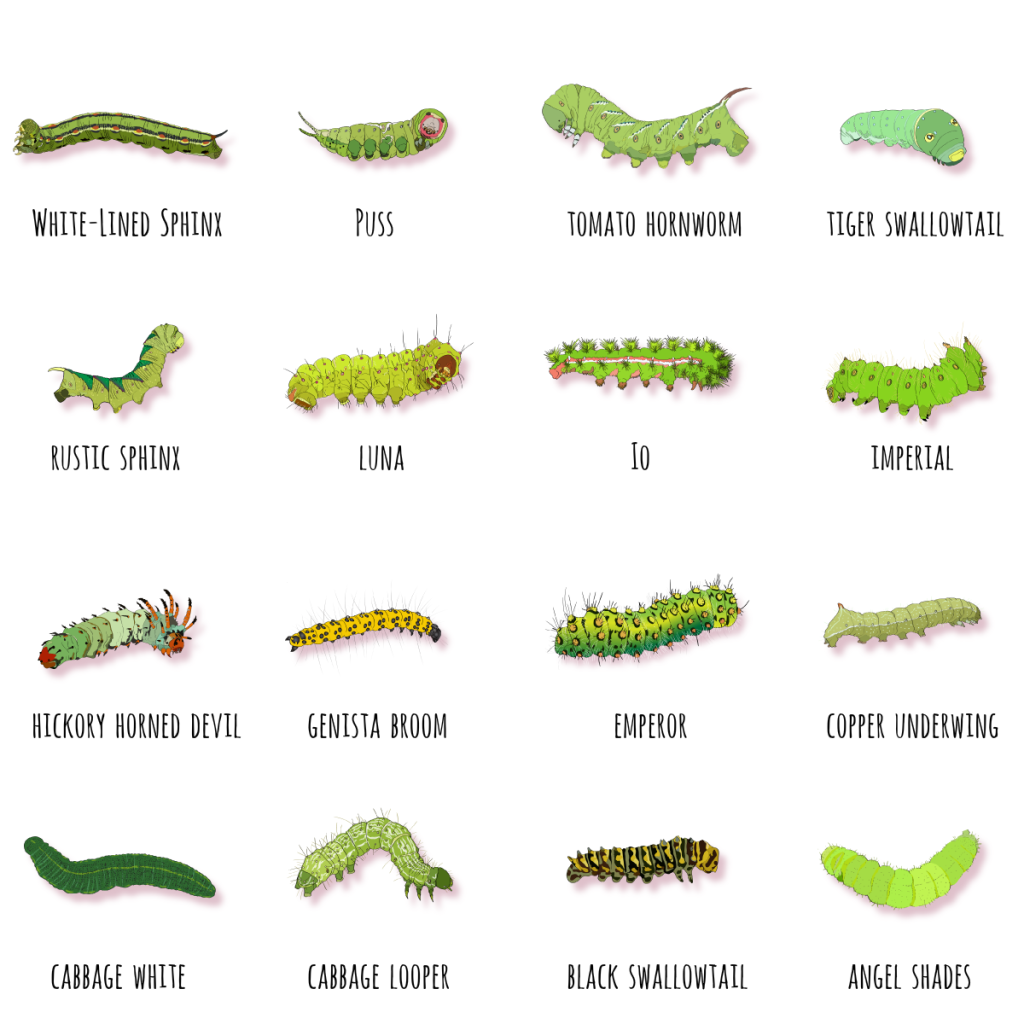Caterpillars, the larval stage of butterflies and moths, are fascinating creatures that play a crucial role in the ecosystem. Caterpillars are pretty common. You have likely come across one or many in your life. With their vibrant colors, various shapes, and unique transformations and adaptions, caterpillars have captured the imagination of nature enthusiasts and scientists alike.
When they are in the caterpillar stage, their main job is to eat a lot. This helps them gather the energy they will need for a big change. They are getting ready to turn into either a lovely butterfly or a cool-looking moth. So, all that munching they do now sets the stage for their stunning transformation later on.
In this blog, we will discuss the diverse world of caterpillars that inhabit our planet.
Estimating the Number of Caterpillar Species
Caterpillars are like little bugs with their soft, fuzzy bodies and lots of bright colors. They have a super interesting life journey, fascinatingly changing their whole bodies until they emerge as either moths or butterflies.
Telling the exact number of caterpillar species that exist on our planet is a complex and difficult task. This is due to the vastness of the insect world and the many undiscovered species. However, entomologists have made significant discoveries in cataloging and classifying these remarkable creatures.
It is estimated that there are around 20,000 species of caterpillars, and there may be many more which are left to be discovered.
Different Species of Caterpillars
Resource resources such as the Guide to Identifying Caterpillars facilitate understanding the vast number of species, which categorizes them into an accessible format for amateurs and experts.
Butterflies and moths start their lives as tiny creatures called larvae. These are commonly known as caterpillars. Once they hatch from their eggs, their main is to eat and grow. When the time is right, they enter a special stage called pupa, where they wrap themselves in a protective cover called a cocoon. Inside, they undergo a magical transformation, and when they emerge, they’ve turned into beautiful adult butterflies or moths.
Some of the types of caterpillars include:
1. Hickory Tussock Moth Caterpillar (Lophocampa caryae)

The hickory tussock moth caterpillar, which is scientifically known as Lophocampa caryae, has distinctive and striking features. Measuring approx 1.77 inches in length, these caterpillars are adorned with a dense coat of white, fuzzy hairs that give them a soft and cuddly appearance.
As they progress through their life cycle, these caterpillars undergo a transformation, ultimately metamorphosing into rusty-brown moths.
2. Sycamore Tussock Moth Caterpillar (Halysidota harrisii)

The Sycamore Tussock Moth Caterpillar is scientifically known as Halysidota harrisii. It has a dense covering of white and yellowish-white hairs enveloping its entire body. This caterpillar features a pair of long pencil-like hairs extending from both ends of its body. Additionally, near its head, the caterpillar sports an extra two to four pencil-like hairs in a vibrant shade of orange.
They measure between 1 to 1.4 inches in length. As these caterpillars undergo metamorphosis, they transform into moths with pale blue, gossamer-like wings.
3. Virginian Tiger Moth Caterpillar (Spilosoma virginica)

The Virginian Tiger Moth Caterpillar is commonly referred to as white-yellow woolly bears. But they are not actually true woolly bear caterpillars. They share a fuzzy appearance with their namesake. They have a distinctive coating of white or light tan hair. Some variations may have shades of dark or rusty brown color. These caterpillars can reach a length of up to 1.77 inches.
As these caterpillars progress through their life cycle, they undergo a remarkable transformation, eventually emerging as striking Tiger Moths despite not being true woolly bear caterpillars.
4. American Dagger Moth Caterpillar (Acronicta Americana)

The American Dagger Moth Caterpillar is native to North America and is located east of the Rocky Mountains. This caterpillar has a coat of fluffy yellow or white hair, creating a vivid contrast with its shiny black head. These caterpillars are commonly observed from August to October, making an appearance in both residential and forested areas. While they primarily feed on various types of hardwood trees, they typically do not cause significant damage to their host plants.
5. Dalceridae Moth (Dalceridae)

The Dalceridae Moth is a unique-looking group of caterpillars. They live in neotropical wet regions and are commonly known as “jewel caterpillars.” They look more like slugs than your average caterpillar, with plump and rounded bodies. This is why they are also called “slug caterpillars” as well. However, what makes jewel caterpillars so unique is that they are translucent. They look more like a pile of gummy candy than an insect!
6. Laugher Caterpillar (Charadra deridens)

The Laugher Caterpillar presents a fascinating blend of peculiar and enduring characteristics, which confuses the observers to decide whether it leans towards creepy or cute. These caterpillars boast squishy white bodies adorned with wispy, long white hairs. The fine texture of these hairs imparts an almost translucent quality, creating a shimmering effect in the sunlight.
Completing their life cycle, these caterpillars metamorphose into strikingly-patterned Laugher Moths or Marbled Tuffet Moths.
Conclusion
Caterpillars are indeed a fascinating group of creatures that play a vital role in the ecosystem around the world. Their diverse forms, behaviors, and evolutionary strategies contribute significantly to biodiversity. Caterpillars can be found in many habitats, from lush rainforests to arid deserts. They also exhibit a wide range of behaviors and life historical strategies.
Additionally, their population strategies, such as forming cocoons, contribute to their diversity. Appreciating the intricate lives of caterpillars provides us with a window into the broader web of life on our planet. It reminds us of the countless wonders yet to be uncovered and the importance of preserving and cherishing our diverse ecosystems.
As we delve deeper into the study of caterpillars, we can expect to uncover even more surprises and gain a deeper understanding of these remarkable insects.

